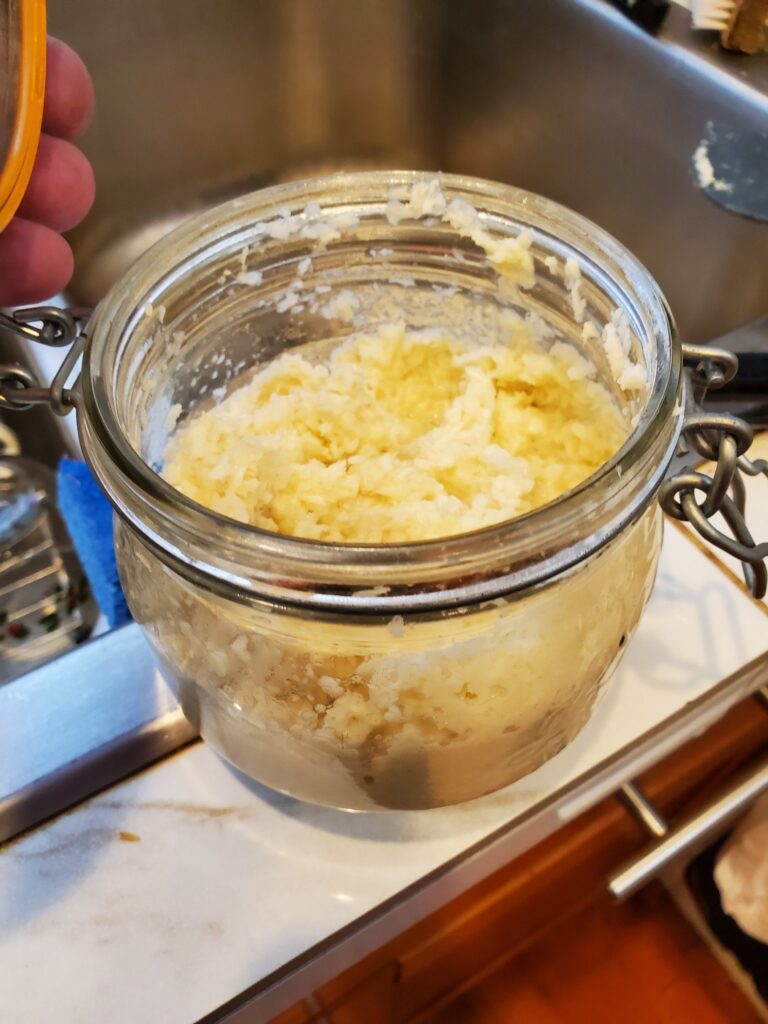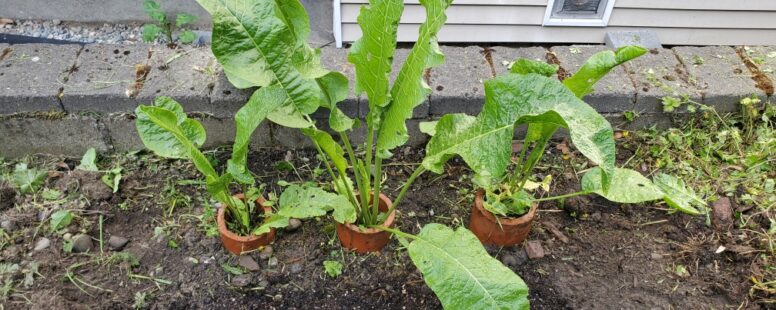The horseradish of our dreams
Years and years ago, i bought a horseradish start at Seattle Tilth’s edible plant sale — so long ago that it was when you could still walk up to the sale, go in without waiting in line, and make your purchase without having to schedule your entire day around it. And i’ve been determinedly growing that start, and generations of its offspring, in a pot across three different gardens.
So what i’m saying is that i’ve been trying to grow horseradish for nearly 15 years. And up until now the roots i’d get when i’d dump out the pot every few years were pencil thin and barely usable. I’d put a few back into the pot, wait a few years for them to grow, and try again. Yet each time we wanted to make grated horseradish, we’d have to buy a root anyway.
But now. Finally i’ve achieved a usable root. The horseradish of our dreams!
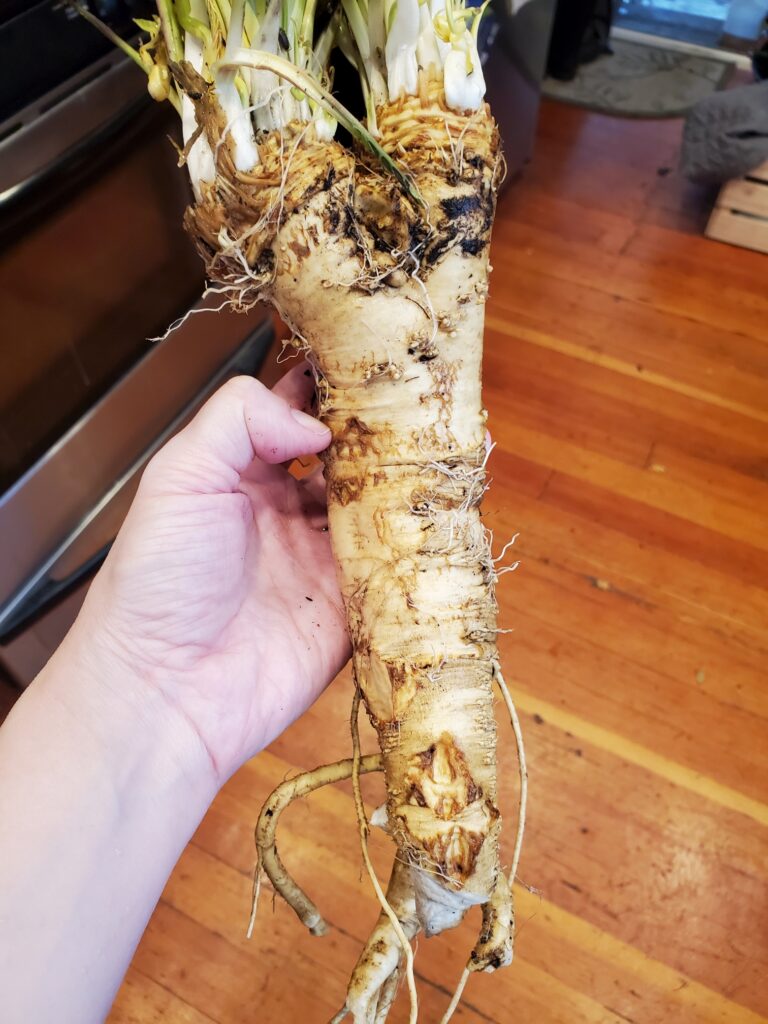
We were able to harvest it right before the Boxing Day snowstorm, so Andy was able to have some grated and ready for our annual New Year’s Day dinner. It’s essential to go with the roast pork!
garden notes
Horseradish has a well-earned reputation for spreading and taking over a garden. I’ve been growing mine in a pot because i didn’t have a garden to plant it into, but even though we moved into a house with a bit of yard back in 2019, i kept mine in a pot because, much as i love horseradish, i’d like to also grow other things.
We still, however, had the problem of only growing pencil-sized, unusable roots. A few years ago i read that a trick to get your horseradish to grow into one large root is to grow it in pipes sunk into the ground. I was very excited to try it, but also a little wary of growing in pipes because i wasn’t sure if they’d be food-safe.
But! Then we discovered the perfect solution, naturally while we were strolling randomly around Gpa Kelly’s (very random) yard on a visit right before we moved into our new house. We found pieces of … CLAY PIPE.
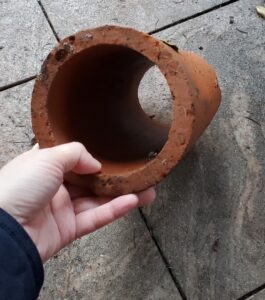
So we sunk the pipes into the crappy clay soil on the side of our house, filled them with good, rich potting soil, and set some small horseradish plants in them. Then, we let them alone for two years. And in the summer of 2021, our horseradish plants looked like this….
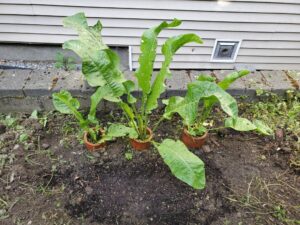
If the picture immediately above this paragraph is visible for you — it was the middle plant/pipe we harvested, and you can see the by the size of the leaves why we had high hopes for a good root. At their largest, the leaves were big enough i could have used them as a parasol!
The great thing about horseradish is there’s always some to keep replanting. I replanted the middle pipe and now we’ll ignore it for a few years. With any luck, we’ll be able to get a good three-year rotation going from these pipes.
Thanks, Gpa Kelly! Wish you were here to experience the result.
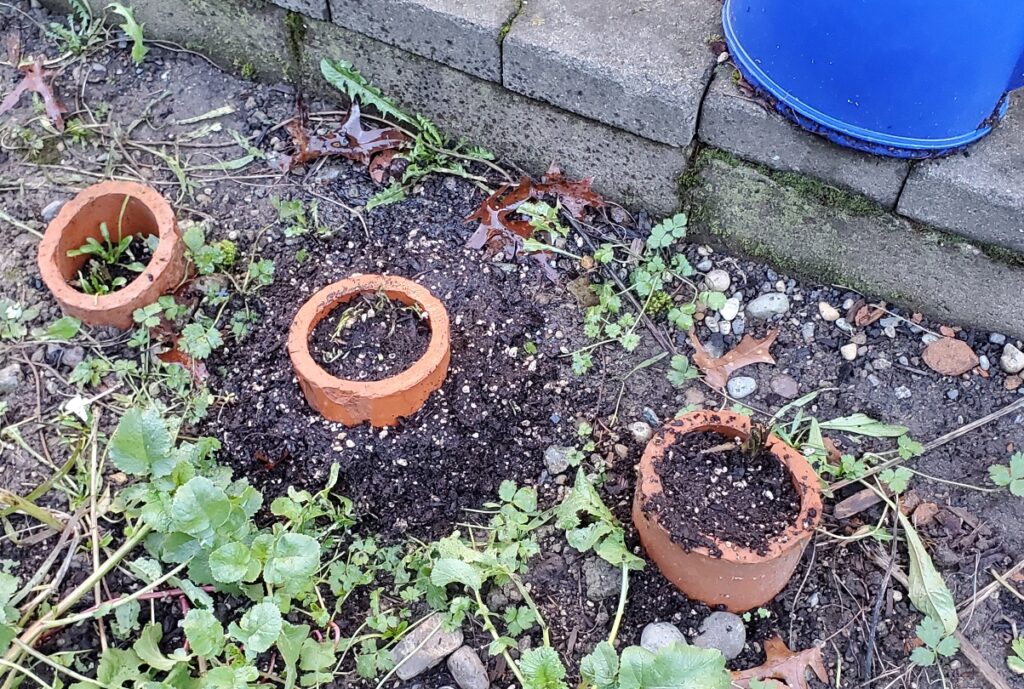
kitchen notes
Andy’s prepared horseradish is pretty straightforward, if you have a food processor. Use a vegetable peeler to peel off the outside of the root. Cut the root into smaller chunks (about one-inch), then process in the food processor with a little bit of water (the water helps the root to chop up better). Continue chopping in the food processor until you get the consistency you prefer — i like mine to be almost a paste. Then put it into a jar for storage. Sprinkle in a little salt and stir it around. Then add enough vinegar to cover the horseradish.
One year Andy did grate it by hand for me, and it produced a really lovely result. So you can always do that if you don’t have a food processor. Because Andy does have a food processor, he’s sworn off ever doing it by hand again, because there’s only so much of the horseradish fumes he can endure.
You may want to process your horseradish root outside. And if you do process it in a food processor, be very careful to not lean directly over the lid when you open it.
